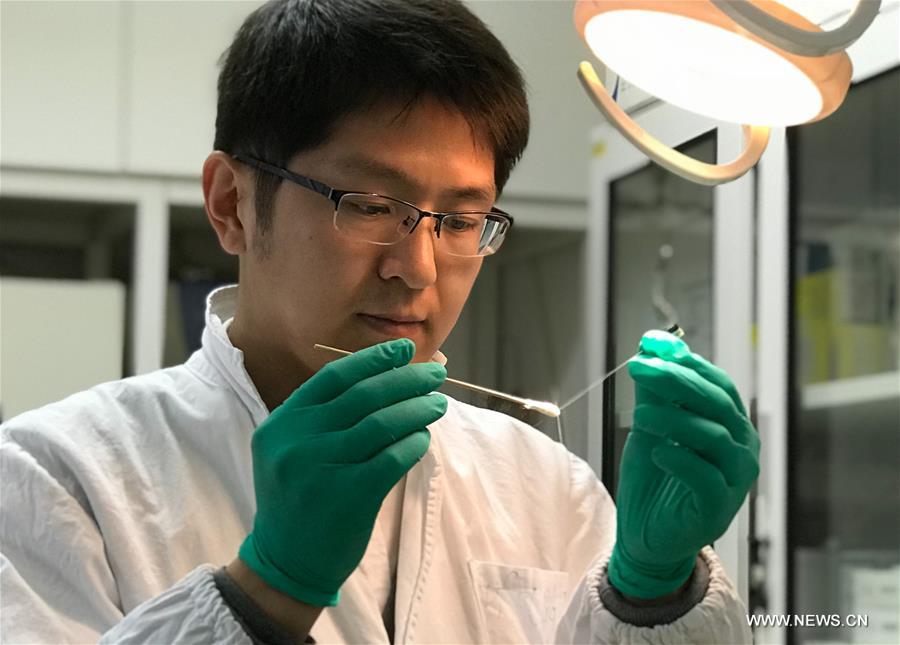
Scientist Yin Jiapeng works at a laboratory on March 28, 2018. Chinese neuroscientists have gained a deeper understanding on how people simultaneously recognize the face of a child, while at the same time visually resolving individual eyelash hairs. The study, published in the journal Neuron, has shown how human and non-human primates manage to conserve local high-resolution information from early to intermediate areas of the visual hierarchy, to fulfill the hard task. (Xinhua/Liu Ye)
WASHINGTON, March 29 (Xinhua) -- Chinese neuroscientists have gained a deeper understanding on how people simultaneously recognize the face of a child, while at the same time visually resolving individual eyelash hairs.
The study, published on Thursday in the journal Neuron, has shown how human and non-human primates manage to conserve local high-resolution information from early to intermediate areas of the visual hierarchy, to fulfill the hard task.
The idea that sensory transformation discards low-level detail to yield invariant classification is a central core of many models of brain function. As the complexity of the object or scene representation increases along the hierarchy, the visual resolution dramatically decreases.
However, researchers are perplexed that people are able to effortlessly combing the fast coarse (global) information and slower fine (local) information together into a coherent perception of the world.
Primates can identify objects in the 10 degree central visual field within 150 milliseconds, suggesting an initial fast cascade of largely feedforward processing.
A lab led by Wang Wei at Institute of Neuroscience of the Chinese Academy of Sciences revealed the unexpected neural clustering that preserves the visual acuity from macaque visual cortical areas V1 into V4, enabling the spatiotemporal separation of processing local and global features along the hierarchy.
The researchers particularly focused on spatial analysis in V4, which links the analysis of local features by V1 and V2 with the global object representation. Spatial resolution is often measured as spatial frequency (SF) discrimination.
Surprisingly, they discovered that clustered "islands" of V4 neurons, selective for high SFs, are up to 12 cycles per degree, far exceeding the average optimal SFs of V1 and V2 neurons at similar retinal eccentricities. These neural clusters violate the inverse relationship between visual acuity and retinal eccentricity.
The clustered neurons with high-SF selectivity were found to respond 10 milliseconds later than those in low-SF domains, providing direct neural evidence for the coarse-to-fine nature of human perception at intermediate levels of the visual processing hierarchy.
The study for the first time showed an unexpected compartmentation of area V4 into SF-selective functional domains that extend to high visual acuity.
Higher acuities are preserved to later stages of the visual hierarchy where more complex visual cognitive behavior occurs, and they may begin to resolve the long-standing paradox concerning fine visual discrimination in visual perception.
Wang told Xinhua that the research will provide new ideas to inspire the next generation of deep neural network architectures constructed by artificial intelligence researchers.















